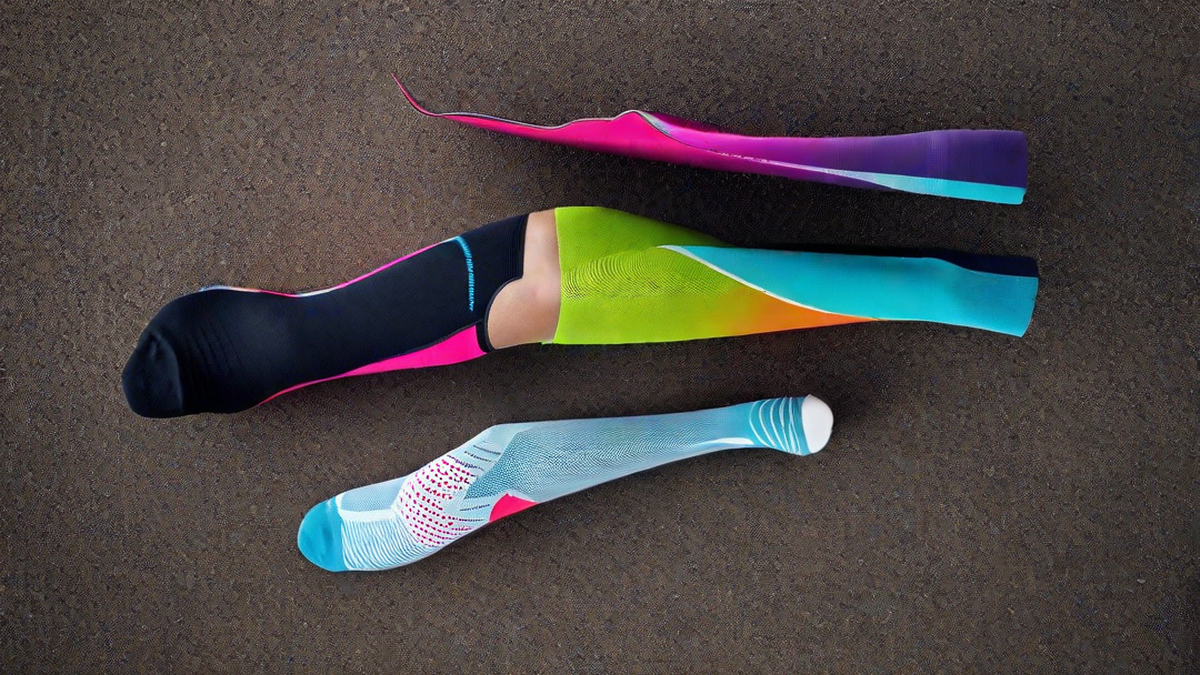Running compression socks and flight socks are often discussed in the context of improving circulation and reducing the risk of blood clots. However, despite their similar purpose, it’s important to note that there are some differences between the two.
Running Compression Socks
As a runner who has experienced muscle fatigue and soreness, I can personally attest to the benefits of running compression socks. These specialized socks apply graduated pressure to your legs, with the highest compression at the ankle and gradually decreasing pressure towards the calf. The purpose of this design is to enhance blood flow, reduce muscle vibration, and improve oxygen delivery to the muscles during exercise.
When I first started incorporating running compression socks into my training routine, I noticed a significant decrease in calf cramps and muscle soreness. The compression helped to stabilize my muscles and reduce the risk of injury. Additionally, they provided extra support to my arches, which improved my overall running experience.
Flight Socks
Flight socks, also known as compression travel socks or compression stockings, are primarily designed for long-distance travelers, especially those on flights. Like running compression socks, flight socks are designed to promote better blood circulation and prevent the formation of blood clots. However, there are some key differences to consider.
Flight socks are typically made with a lower compression level compared to running compression socks. The purpose of this lower compression is to prevent swelling and deep vein thrombosis (DVT) during long periods of sitting. DVT is a condition where blood clots form in the deep veins, usually in the legs, which can be life-threatening if not addressed promptly.
During long flights, I have personally experienced leg discomfort and swelling. However, wearing flight socks has greatly alleviated these issues. The gentle compression provided by flight socks promotes blood flow and prevents fluid retention, making my legs feel more comfortable and reducing the risk of developing blood clots.
Are They the Same?
While both running compression socks and flight socks serve the purpose of improving circulation and reducing the risk of blood clots, their key differences lie in their compression levels and target audience. Running compression socks are designed specifically for athletes and provide higher levels of compression to support active muscle performance. On the other hand, flight socks are designed with a lower compression level to prevent swelling and DVT during long periods of inactivity, such as air travel.
It’s worth noting that running compression socks can also be beneficial for travelers, especially those who engage in physical activities during their trips. The higher compression levels can provide additional support and help reduce muscle fatigue after long walks or hikes.
Conclusion
In conclusion, while running compression socks and flight socks share similarities in their goal of improving circulation and reducing the risk of blood clots, they have several key differences. Running compression socks are designed for athletes, providing higher levels of compression to enhance active muscle performance, while flight socks are designed for long-distance travelers, with lower compression levels to prevent swelling and DVT during periods of inactivity.
Whether you’re a runner or a frequent traveler, it’s important to choose the right type of compression socks that best suits your needs. If you’re unsure, consult with a healthcare professional or a specialist in sports medicine to determine the most appropriate compression level for your specific situation.

